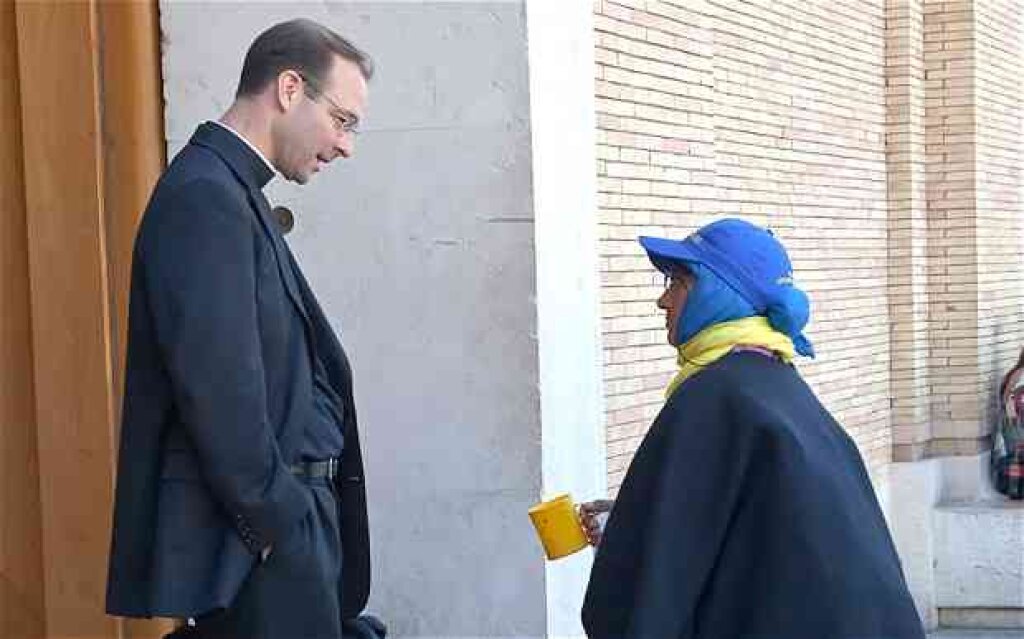Maria Arievitch is a second-year Sociology student at the College of Arts and Science at New York University, interested in studying wealth and inequality on a comparative international scale.
When discussing economic and political change within both national and international frameworks, public debate most often focuses on issues such as unemployment, job availability, taxation, political parties, and social reform – and rightly so. The semantics of public discontent and political rhetoric have long dealt with such historically disputed topics; and only in recent years has the ‘bigger-picture’ question of income and wealth inequality come to the attention of public discourse. This new increased scrutiny of the growing income and wealth gap in the United States is interesting and worth analyzing as it relates to not only a changing economic dynamic within our country, but also to the way in which we perceive the scope of inequality on an international scale. What is the American collective attitude towards the economic plight of other developed countries such as Russia, if any at all? And is there a kind of mechanism of self-validation embedded in the way in which we make these comparisons?
Perceptions and Attitudes: Fact and Fiction
It should come as no surprise that the perception of American media outlets (and consequently their subscribers) towards the Russian economic structure is markedly negative; widely-read and esteemed sources such as National Public Radio post self-congratulatory headlines such as “If You Think Wealth Disparity Is Bad Here, Look At Russia,” and popular, widely-read news sources distribute the verdict on Russia’s “staggering” income inequality, condemning the supposed levels of abject poverty plaguing the country. Countless media outlets jump at the opportunity to publicize sparse statistics looking to minimize the bleak outlook of American egalitarianism. Undoubtedly, the question of inequality is a loaded one: its roots lie deep within the origins and practices of capitalism, which have expanded within the United States for centuries without challenge. It is precisely for this reason (not to mention other historically-rooted tensions with Russia) that inequality is so difficult to question on a grand scale, and it is for this same reason that cross-national comparison from both ends is muddled with bias and a lack of statistical common denominators. Whatever the causes may be, the true data measuring an objective comparison show the truth: we are hypocritical in our statistics and in our analyses of disparity as compared to the rest of the world. This form of denial and selective perception regarding inequality in Russia and the United States reflects a lack of self-awareness, perhaps an unwillingness to acknowledge the severity of our own situation.
With the increasing attention to income and wealth inequality, more and more Americans are becoming aware of the dire economic situation: the fact that approximately 80% of the nation’s total income growth is owned by the top 10%[1] has almost become a mantra of those who attempt to shed light on American inequality. Still, this bold shift towards openness and discussion regarding disparities is met with equally strong assertions on the part of the media. The Huffington Post’s article proclaims: “Russia’s Wealth Inequality One of the Highest in the World,” using citations such as “a major investment bank says…” Rarely do the reports reveal the methods or standards by which such drastic conclusions were drawn. Upon further research, it turns out that the popular source, as with the case of the Huffington Post article, is Credit Suisse. Their calculations are openly incomplete, and according to Business Insider they were “forced to ‘estimate’ real assets”[2] such as property data, thereby rendering it incapable of considering all the components that wealth is comprised of. Since the study could not rely on non-financial assets to make an accurate estimate of wealth distribution, this deficiency has the potential to distort greatly a comprehensive understanding of Russia’s inequality.
Income and Wealth: Is There a Difference?
To confuse any potential scientific analysis even further, those reports that intend to portray American inequality in a more positive light do very little to differentiate between income and wealth. Wealth, as described by Thomas Piketty in his widely-respected work Capital in the Twenty-First Century, is the less dynamic counterpart of income often more dependent on ascription.[3] Much of wealth is inherited and can be accumulated with little to no dependence on professional ambition, skill, or effort. Income, on the other hand, is much more likely to change over time, and is very much dependent on taxation, employment, economic policy, global affairs, and other factors that continuously fluctuate based on the nation’s political and economic standing. Whether income or wealth is a better indicator of inequality in a country is debatable, and both have been cited as reliable sources for drawing conclusions on economic disparities. The problem remains, however, that many articles and publications that popularize these studies use wealth and inequality interchangeably, or make no effort to distinguish between the two, leading the public to draw inaccurate conclusions.
What do the Facts Say?
In order to properly gauge the differences in inequality between the Russian Federation and the United States, it is necessary to first examine the raw economic data behind the statistics of both national wealth and income. According to the World Bank, the United States’ Gross Domestic Product as of 2013 was 16.80 trillion dollars, as compared to Russia’s 2.097 trillion.[4] As of 2013 the Purchasing Power Parity of the United States was 53,960 in international dollars, while the PPP of the Russian federation was 23,200,[5] only slightly below the 25700 PPP of the European Union.[6] This significant difference in economic data between the two countries complicates the analysis of inequality, as many studies make a point of mentioning as a disclaimer.
As a result of the incongruous nature of calculations concerning wealth, income, and the many factors that go into calculating economic disparities, the Gini coefficient was created as a credible and widespread unit of measurement of inequality. The Gini index uses the top and bottom 10% of a population to determine a country’s level of inequality on a scale of 0 (perfect equality) to 100 (perfect inequality).[7] Both the data of the CIA and the World Bank demonstrate some surprising results. In both cases, the United States displays a higher disparity among its citizens, with a coefficient of 45 and 42,[8] and 40.8 and 40.1,[9] respectively. Such data puts into perspective the forceful claims that were publicized using the imperfect data of Credit Suisse. Even though Credit Suisse and the articles that publicized its findings were mainly addressing wealth inequality, the problem lies in unequal meaning, intention, and dissemination of the term itself. Since wealth and income are different yet rarely differentiated, articles speaking of wealth inequality in Russia tend to obscure, for example, the exorbitant income inequality that prevails in the United States, despite what place or ranking it may hold on an international scale (which is near the bottom on the list of the developed world[10]).
Poverty: No Universal Definition
Another important factor to consider is the statistics concerning the poor and the middle class in both countries, such as living conditions and poverty levels. The United States is a country where one third of the entire population receives food subsidies from the government,[11] and according to the U.S Census Bureau, as of 2012 the official poverty level was 15%, or 46.5 million people.[12] By contrast, according to Rosstat, Russia’s poverty level during the same year was 10.7%, or 15.4 million people.[13] These statistics, despite the higher population in the United States, still reveal an impressive difference and provide insight into an issue that may not be immediately apparent from looking at each Gini coefficient alone or from comparing GDPs. Poverty is a particularly telling factor to examine, since the main problem implicated in a large income or wealth gap is a high level of poverty or paycheck-to-paycheck living, compared to an increasingly concentrated and privileged elite holding the majority of the country’s wealth, resources, and power. The comparatively lower percentage of poverty in Russia in 2012 does not dismiss the issue at large – for example, in the United States, one person is poor with an income below 11,670 dollars.[14] In Russia, the level is only 2,388 dollars.[15] Taking Purchasing Power into account, it is clear that poverty is a significant problem in both countries, particularly in Russia. There is also a large disparity in our knowledge of the middle class, statistics on which are largely absent, along with the added consideration of an income tax versus a flat tax, the latter being prevalent in Russia. Despite these gaps in research, the poverty line still does not speak to levels of inequality, and if it is to be considered an important factor in the measurement of national prosperity, the data makes it more difficult to present a one-sided argument on Russia being much more unequal than the United States.
What History Can Tell Us
Aside from the many nuances of quantitative analysis in social and economic inequality and the shortcomings of research methods and data, there is another layer of complexity that involves the historical and political contexts of each country. Research and data cannot and should not be taken at face value as if in a vacuum, free of any external dynamics that significantly affect their interpretation. In reality, behind each statistic and national data there are political, economic, historical, and social forces that influence the way in which, for example, the Russian economy developed, or the reason for such significant wealth disparities originating from the age of post-Soviet privatization. The NPR article denouncing Russia’s wealth gap, for example, mentions briefly the 2007 economic crisis as an influence on the current distribution, and it also mentions that in the United States, “the gap between the richest 1 percent and the rest of the population is the widest since the 1920s.”[16] While it may be quantitatively sound to compare the raw numbers regarding Russia and the United States, failing to include or to emphasize such information that provides perspective creates only a partial insight into what should be the beginning of an explanation for the given circumstances.
Hasty comparisons and declarations about Russia’s colossal inequality only detract from a much-needed discourse among politics, policymakers, analysts, citizens, and many others on a pressing issue that demands immediate redress. While legislation and political rhetoric continue to focus on important issues such as social progress, human rights, and political parties, it is also time to pay more attention to the age-old problem of wealth and income distribution that has been plaguing the entire world for centuries. In order to do so and to analyze the issue properly, it is necessary to honestly and accurately examine social statistics and economic strata. Although it is important to understand that economic debate and comparison will and always has been a deeply political issue, it is also crucial to ensure that cultural and historical bias does not prevent thorough and proper research from being conducted in order to reveal often surprising results, as has been shown with the case of inequality in Russia and the United States, along with the revelation of many skewed assumptions that distort the truth and hinder progress for the future.
Notes
[1] http://www.oecd.org/els/soc/OECD2014-FocusOnTopIncomes.pdf
[2] http://www.businessinsider.com/putting-russias-unparalleled-wealth-disparity-in-perspective-2013-10
[3] Piketty, Thomas. Capital in the Twenty-First Century; Chapter 1.
[4] http://data.worldbank.org/indicator/NY.GDP.MKTP.CD
[5] http://data.worldbank.org/indicator/NY.GNP.PCAP.PP.CD
[6] http://www.imf.org/external/pubs/ft/weo/2014/01/weodata/weorept.aspx?pr.x=46&pr.y=16&sy=2014&ey=2014&sort=country&ds=.&br=1&c=998&s=NGDPD%2CPPPGDP&grp=1&a=1
[7] http://data.worldbank.org/indicator/SI.POV.GINI
[8] https://www.cia.gov/library/publications/the-world-factbook/fields/2172.html
[9] http://data.worldbank.org/indicatintor/SI.POV.GINI?order=wbapi_data_value_2010%20wbapi_data_value&sort=asc
[10] http://www.washingtonpost.com/blogs/worldviews/wp/2013/09/27/map-how-the-worlds-countries-compare-on-income-inequality-the-u-s-ranks-below-nigeria/
[11] http://www.newsmax.com/US/food-stamps-assistance-program/2013/07/08/id/513860/
[12] http://www.census.gov/hhes/www/poverty/about/overview/index.html
[13] http://www.gks.ru/free_doc/new_site/population/bednost/tabl/2-03.htm
[14] http://aspe.hhs.gov/poverty/14poverty.cfm
[15] http://www.themoscowtimes.com/business/article/analysis-economic-quandary-puts-life-at-199-per-month-at-risk/463159.html
[16] http://www.npr.org/blogs/parallels/2013/10/10/231446353/if-you-think-wealth-disparity-is-bad-here-look-at-russia



